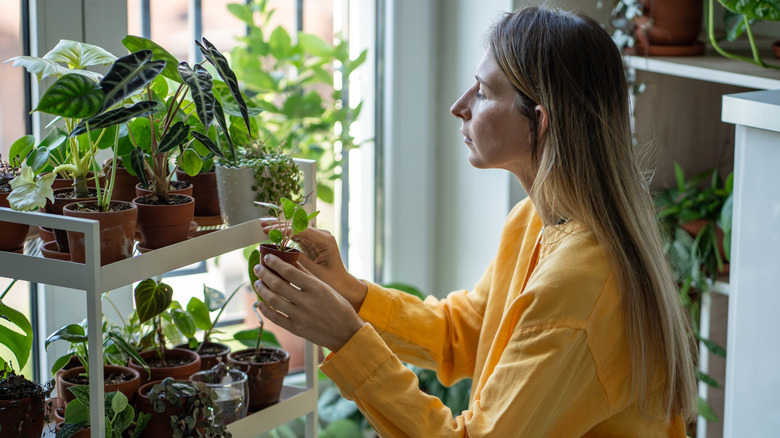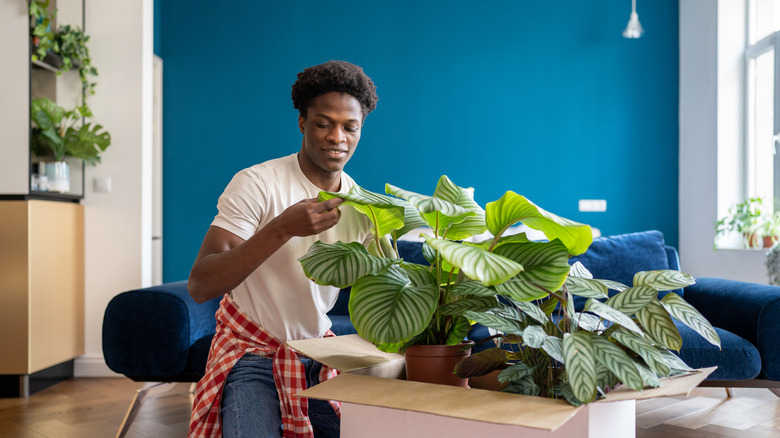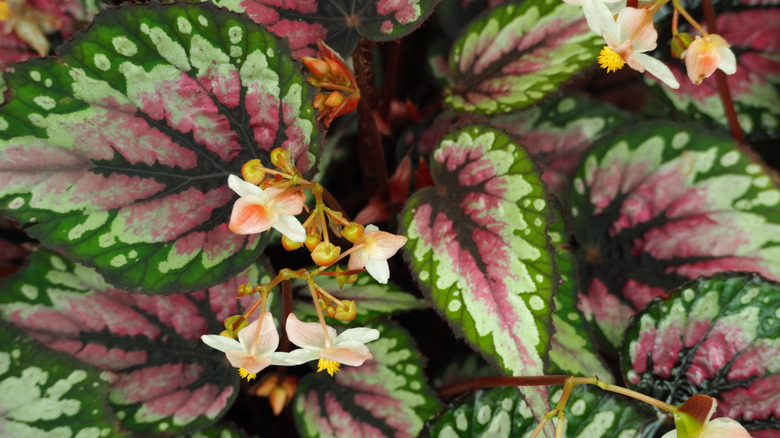The High-Maintenance Plant Houseplant Pros Are Ditching For A Better Alternative
With the start of the new year, many of us are reevaluating our time, needs, and energy — and assessing what actually deserves them. Unfortunately, this might mean that some of our more high-maintenance houseplants don't make the cut. Although calatheas are an air-purifying plant to keep in your home, they're also known to be one of the drama queen houseplants that show you when they are feeling neglected.
These tropical plants, praised for their alluring colors, intriguing patterns, and glossy leaves, are native to Central and South America. They're also known as prayer plants because their leaves turn upward at night, mimicking the look of praying hands. Pet owners also love them because they're non-toxic to cats and dogs.
"I love the look of calatheas, but they are absolutely one of the most dramatic plants I've ever grown," said Tiffany Selvey, House Digest's Garden Editor and in-house Master Gardener, in an exclusive interview with House Digest. "Although I have a collection of around 70 houseplants, some of which are quite old, I've never kept a calathea alive."
Grow begonias for a beautiful, low-maintenance houseplant
"Part of what makes calatheas so difficult is their particular light, soil, and humidity demands," explained Tiffany Selvey in her exclusive interview with House Digest. The calatheas' stunning foliage makes them irresistible, but once we bring them home, their appearance wanes if we can't keep up with their needs. The edges of their leaves curl under, droop, or turn brown and crispy. Inadequate or excessive lighting causes the leaves to lose their rich brilliance. If there's too much humidity, the plant is susceptible to gray mold and mealybugs. But don't keep the air too dry or else you'll find your plant infested with spider mites.
"Unless you want to be a full-time caretaker for a houseplant, there are definitely better options," Selvey stated. "I am partial to begonias. I have six different species of this plant, and have found that it's so easy to grow begonias in your home."
What you need to know about begonias
Similar to calatheas, begonias also are known for their striking foliage. With almost 2,000 species available, begonias feature a variety of shapes, patterns, sizes, and colors. Different types of begonias may have their own requirements, but in general, these plants like bright filtered light, medium to high levels of humidity, and water when the top few inches of the soil are dry. Be aware that begonias contain a chemical called calcium oxalate, which is mildly toxic to cats, dogs, and horses when eaten. Thankfully, the first bite usually irritates the animal's mouth and throat and deters them from eating more.
In her exclusive interview with House Digest, Tiffany Selvey recommended the 'Argenteo-guttata' or 'Angel Wing' begonia as a low-maintenance variety. They like bright indirect light, regular potting mix, humidity, and being slightly root-bound. "Under my care, [the plant] has survived severe neglect, my cat knocking it off and breaking several stems, sun scald, and probably more!" she said. For gorgeous color, Selvey suggested rex begonias (pictured above), aptly known as 'Painted Leaf' begonias, with their swirls, tie-dye patterns, and dramatic contrast.


